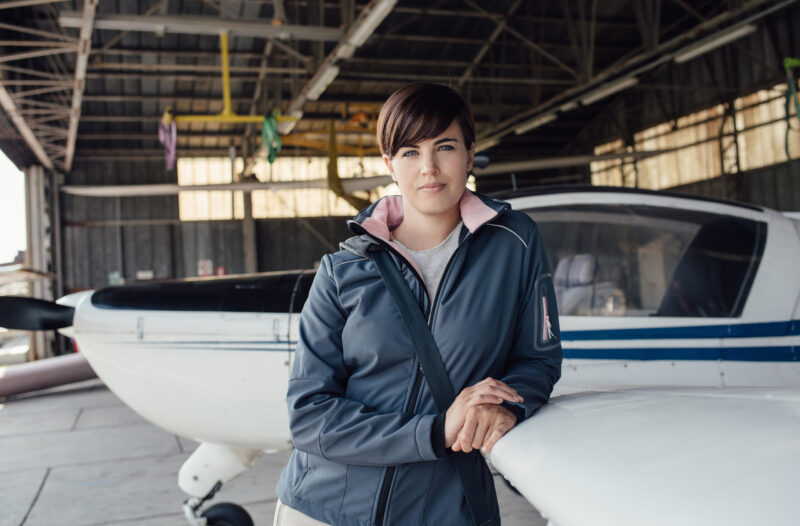Physical exam guidelines
The FAA has specific guidelines on what they want an AME to evaluate. This is to establish a baseline level of standardization across all AMEs. As we have previously discussed, you also need to be careful of those AMEs that do not adhere to any semblance of a medical examination.
Every pilot who wants a medical certificate has to meet the standards set forth by the FAA for medical certification. Everyone must provide a urine sample. Everyone must pass the eye exam, or be granted an exemption called a SODA, which we have touched on. There is a hearing test, which can be accomplished in a few ways. And the AME is required to directly examine your body for signs of disease that may be incompatible for flight.
Expectations versus reality
Between the guidelines set forth by the FAA and the guy who doesn’t examine you at all, there is a lot of leeway for a doctor in how they conduct your physical exam. Keep in mind that this is, after all, a physical examination, which requires a different mindset and a different level of preparation than a routine check up from your family doctor.
In the role as an AME, the doctor is an evaluator vs being a treating physician and educator. It isn’t a counseling session where you just talk about things. You should expect the doctor to touch you and look very closely at certain parts of your body. Special emphasis should be placed on parts of your body with a medical history concerning for safety of flight. If you have a history of sinus problems, the AME should be looking in your nose and ears very carefully. If you broke your ankle a few months ago and are limping, the AME should evaluate that ankle more carefully than they would the pilot who was in previously.
What should not be done?
There is a baseline level that absolutely should be done. And there may be reasons to examine some things that others without aviation medicine knowledge may not fully understand. The AME needs to inspect you somewhat closely to determine if you meet the requirements. But some things absolutely should not be done without a very specific reason or at the request of the pilot.
Most people probably wouldn’t blink if an AME asked a male pilot to take their shirt off for the exam. But what if the pilot were a woman? Is the removal of the shirt a necessary part of the exam?
When examining the heart, lungs, chest, back, and abdomen it certainly helps to be able to see those areas. A stethoscope works better with fewer layers of clothing between it and the skin. However, the FAA guidance is that a breast examination is NOT included in the exam requirements unless specifically requested by the applicant. The same holds true for a pelvic or rectal exam. Women should NOT be asked to remove all of their clothing.
What is acceptable
If a physician wants to see more skin it is equally effective to have the pilot raise their shirt a bit around the abdomen and back, pull down on the neckline some, and pull up the sleeves. The stethoscope itself can be slipped under the shirt collar or the bottom of the shirt. Alternatively, the physician could provide a medical gown and ask the pilot to change into that so it is easier to conduct the exam while still allowing the pilot to keep themselves covered.
Using an example similar to the ankle mentioned above though, if a breast surgery or significant procedure was completed only a week prior, then it is reasonable for the AME to check the surgical site for proper healing or signs of infection.
The average AME
According to the FAA’s most recent Aerospace Medical Certification Handbook, the average AME is an older white man. 87.4% of AMEs are men with an average age of 62. 58.18% of all AMEs are over 60 years old. Furthermore, race and ethnicity are not mentioned in the Handbook, but from personally attending training events and conferences, the overwhelming majority are white. This isn’t an inherently bad thing, but it does highlight that there very well may be significant generational differences between pilots and their AME. It also means that women and minorities are unlikely to find an AME of matching gender or race near them.
Should this be a factor? No, it should not. But just because something should not be a factor, does not mean that it is not a factor. We have heard stories of women pilots being told to remove all of their clothing for the exam. We have been told that some AMEs ask women “Why would you want to be a pilot?” in a rather belittling tone. Moreover, it isn’t the AMEs job to question motivation and suitability for piloting skills. It is solely their job to evaluate for medical qualifications.
Protect yourself and others
If you encounter an AME who you feel is behaving inappropriately, we recommend you contact the FAA Aerospace Medical Certification Division directly. We also feel that the PIREP feature on our own AME directory, Pilot Doctors, is an excellent way to inform other pilots of your experience with a particular AME. Most AMEs are trained professionals who take their obligations as physicians and FAA designees very seriously. Speak up if you think you spot a bad apple. Don’t let one of them ruin aviation for you or anyone else.
Also see: Wingman Medical Corporate Service





